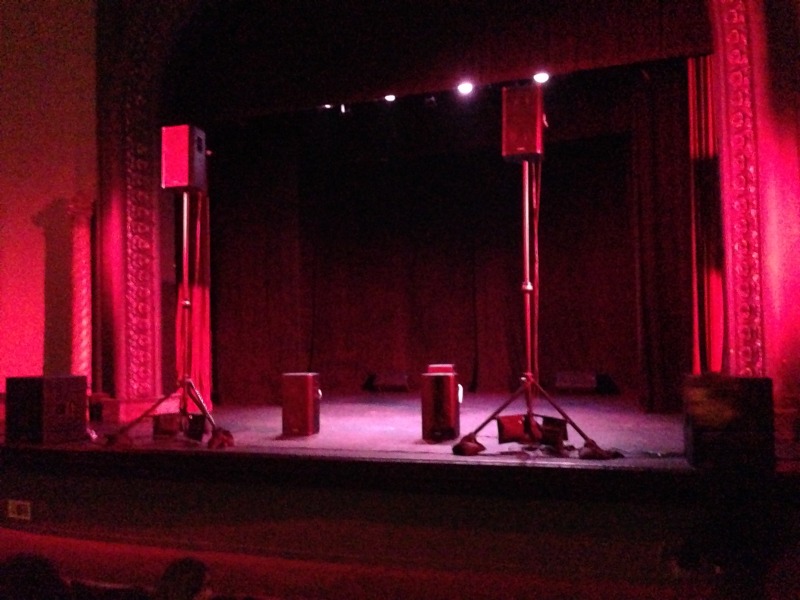After the first set, people sitting near me describe the sensation of listening. The woman to my right says she has been listening to this kind of experimental music for 30 years. She likes it because “you don't know where it is going to go.” The man on my left says it makes you “drift in and out of visual memories.” “You feel like you are being pulled into or away from different things,” the woman next to him says. “There were some volcanoes and things happening for sure. I felt like I was in a river.” The guy adds that “it's cool all these people came out to sit in the dark and trip out on all these sounds.”
For the festival organizers, it's cool the music draws such a big crowd -- and it's also kind of a shock.
“I had no thought that so many people would be into this kind of music," says festival coordinator Matt Ingalls. He started this show with some friends 15 years ago essentially for their own enjoyment. The core Tape Music group is Ingalls, Thom Blum, Kent Jolly, Cliff Caruthers and Joseph Anderson.
"[For the first year], we just got all our home studio equipment together and did a performance," Ingalls explains, “and it sounded really cool and we were like, 'Hey, why don't we turn this into a festival?'”
The show has grown ever since, as has interest in the genre. Now places like the San Francisco Symphony and the city’s Exploratorium have experimental music nights. At the yearly Tape Music Festival you can hear new compositions alongside classics, such as the 1930 recording made by German filmmaker Walter Ruttman.
Ingalls considers this the first piece of tape music. It's an audio collage of urban sounds titled "Weekend."
The name “tape music” comes from the act of recording sounds onto tape. The genre is also called “acousmatic sound” or “Musique Concrète” in France -- there it gained popularity in the '40s and '50s. By the 1960s, tape music had started to influence American rock-and-roll musicians like Frank Zappa.
In classic Zappa weirdness, this piece from 1968 is titled "Nasal Retentive Calliope Music."
Ingalls says in the '60s it seemed like tape music might become more mainstream. “Everyone felt it was moving that way,” he says. “It was a very experimental time for music, but somehow, somehow music lost its way and moved back to more mundane pop.”
Instead of becoming popular, experimental music moved into academia and became computerized. Former UC Berkeley Professor David Wessel wrote this piece, "Antony," in 1977. He created the music by using a mainframe computer to layer numerous sine waves of sound on top of each other.
Modern composers like Thom Blum and Cliff Caruthers now depend on computers, but the heart of tape music still lies in the sounds they record. “I've always been interested in sound,” Caruthers says. “Even as a little kid, those things always fascinated me.”
His piece, "Natoma" features recordings of water, Caruthers' dad reading a children's book, an instrument his friend made, and the New York subway. “For a long time whenever I would take a trip, that recorder was on my hip and always just collecting sounds," he says.
Caruthers calls his compositions audio sculptures, built out of those little bits of sound he gathers from all around him.
